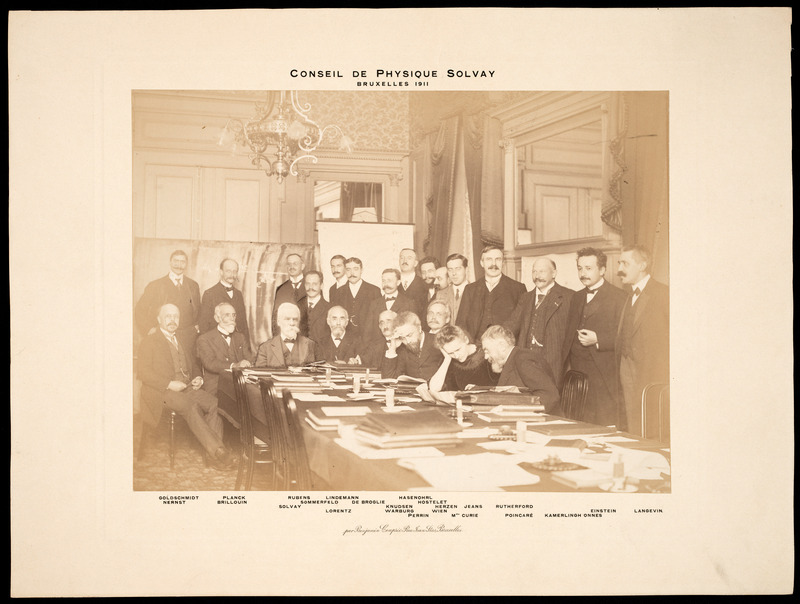Biographical/Historical Information
Louis de Broglie, 1892-1987. French theoretical physicist. Nobel Prize for physics 1929.
Marie Curie, 1867-1934. Physicist, Nobel Prize winner. With her husband, Pierre Curie, she discovered the elements radium and polonium and launched the study of modern physics.
Victor Moritz Goldschmidt, 1888—1947. German mineralogist and petrologist
Sir James Hopwood Jeans, 1877—1946. English physicist, astronomer, and author. Professor of applied mathematics, Princeton (1905—09); lecturer in applied mathematics, Cambridge (1910—12); secretary, Royal Society (1919—29); research associate, Mt. Wilson Observatory, Cal. (1923—44). Worked esp. on kinetic theory of gases, radiation, multiple star systems, stellar evolution, etc.
Paul Langevin, 1872—1946. French physicist. Taught at Collège de France (from 1902) and École Municipale de Physique et Chemie (from 1904); fled to Switzerland (1944). Known for work on secondary X-rays, the properties of ions in gases, the kinetic theory of gases, Brownian movement, the theory of magnetism, the theory of relativity.
Ferdinand Lindemann, 1852—1939. German mathematician.
Hendrik Antoon Lorentz, 1853-1928. Dutch physicist. Awarded (jointly with Zeeman) 1902 Nobel prize for physics.
Walther Nernst, 1864-1941. German chemist. 1920 Nobel prize for chemistry.
Heike Kamerlingh Onnes, 1853—1926. Dutch physicist. Nobel prize for physics 1913.
Jean Baptiste Perrin, 1870-1942. French physicist. Nobel Prize in physics 1926.
Max (Karl Ernst Ludwig) Planck, 1858-1947. German physicist. Nobel prize for physics 1918.
Jules-Henri Poincare, 1854—1912. French mathematician.
Arnold Johannes Wilhelm Sommerfeld, 1868-1951. German physicist.
Otto Heinrich Warburg, 1883—1970. German biochemist. Nobel prize for physiology or medicine 1931.
Wilhelm Wien, 1864-1928. German physicist. 1910 Nobel Prize for physics.
Reproductions and Permissions
We welcome fair use of this content. Please credit the Leo Baeck Institute in your citation. For usage policies and to request higher resolution images, see Reproductions and Permissions.
Citation
Conseil de Physique Solvay, Leo Baeck Institute, F 13758.
